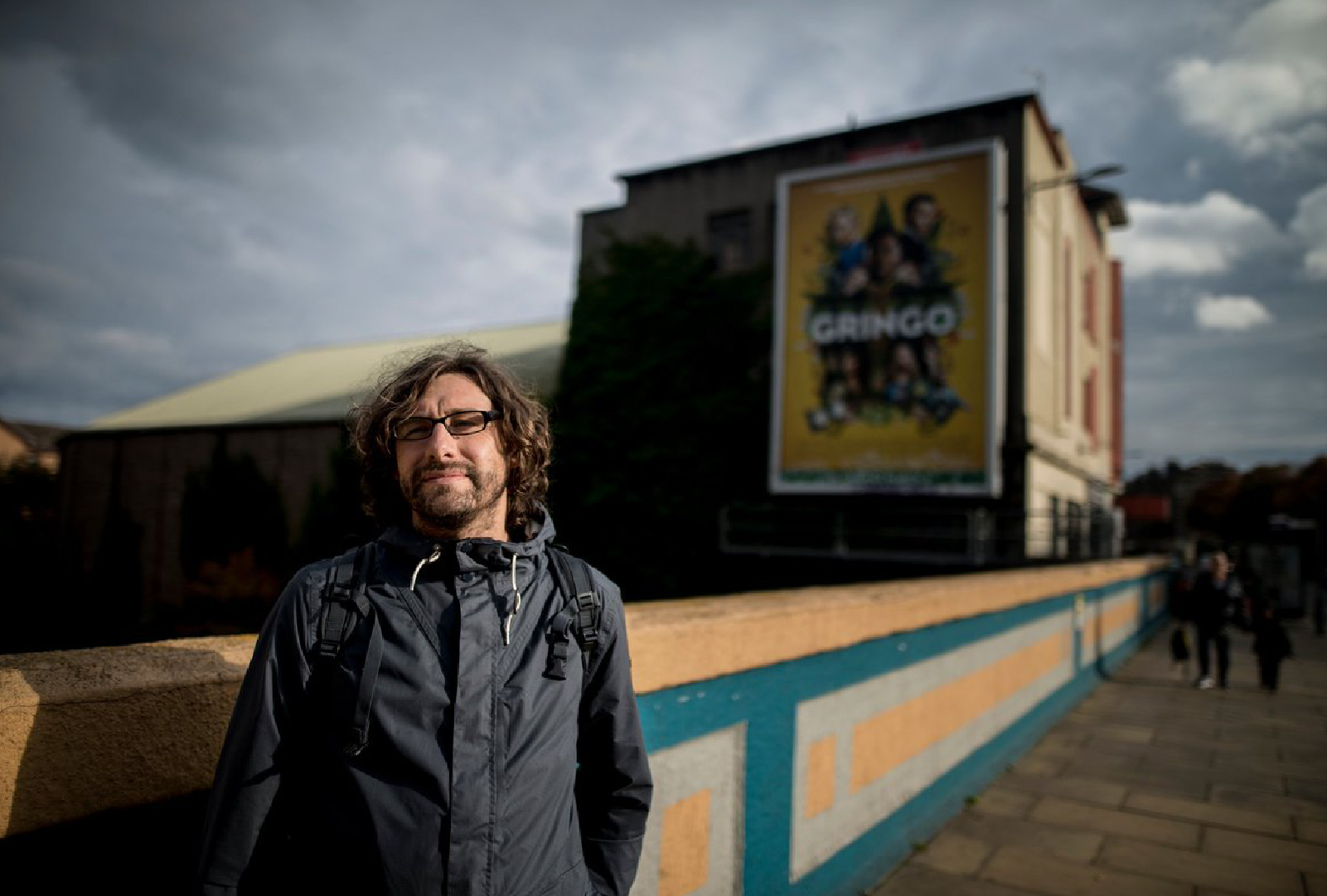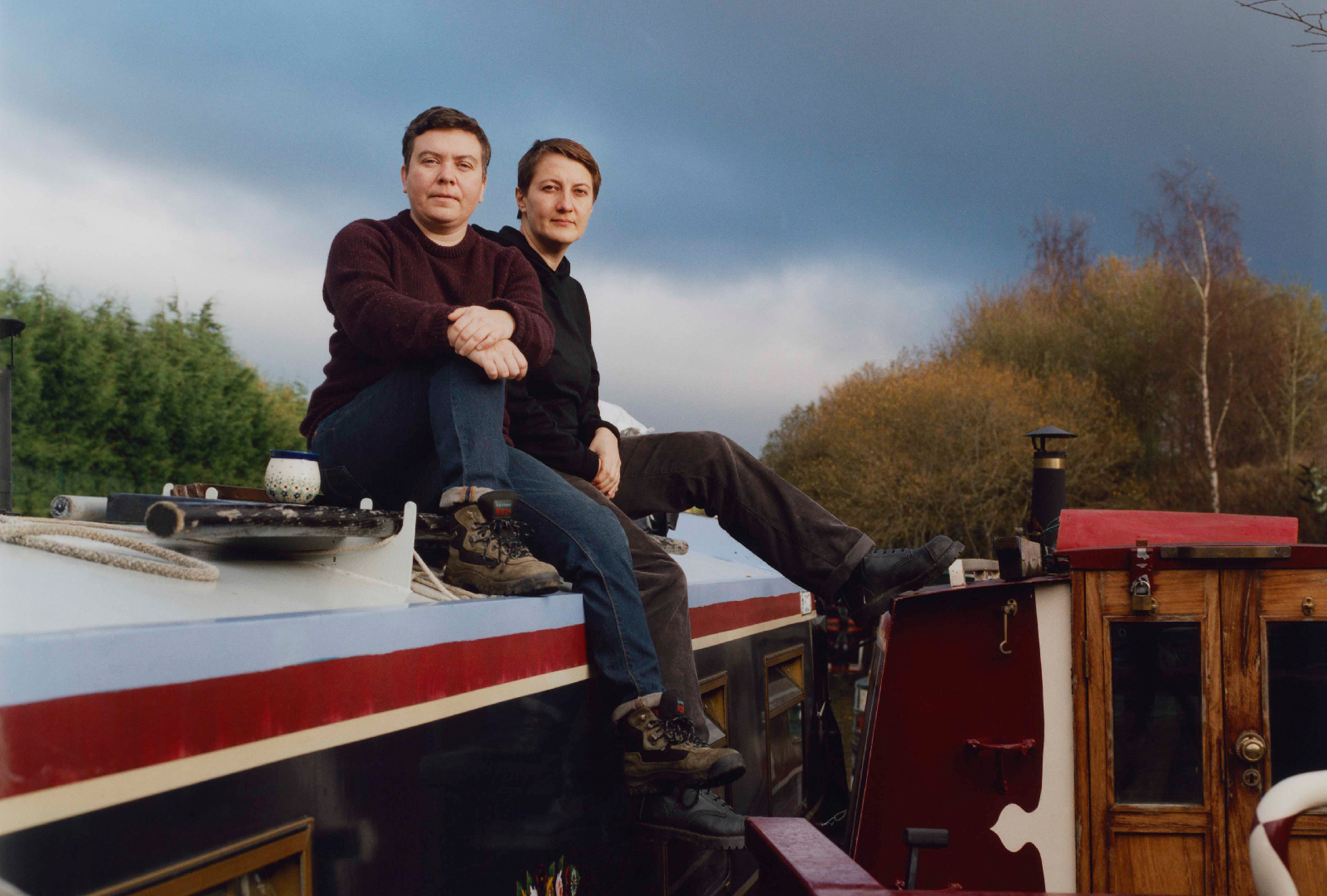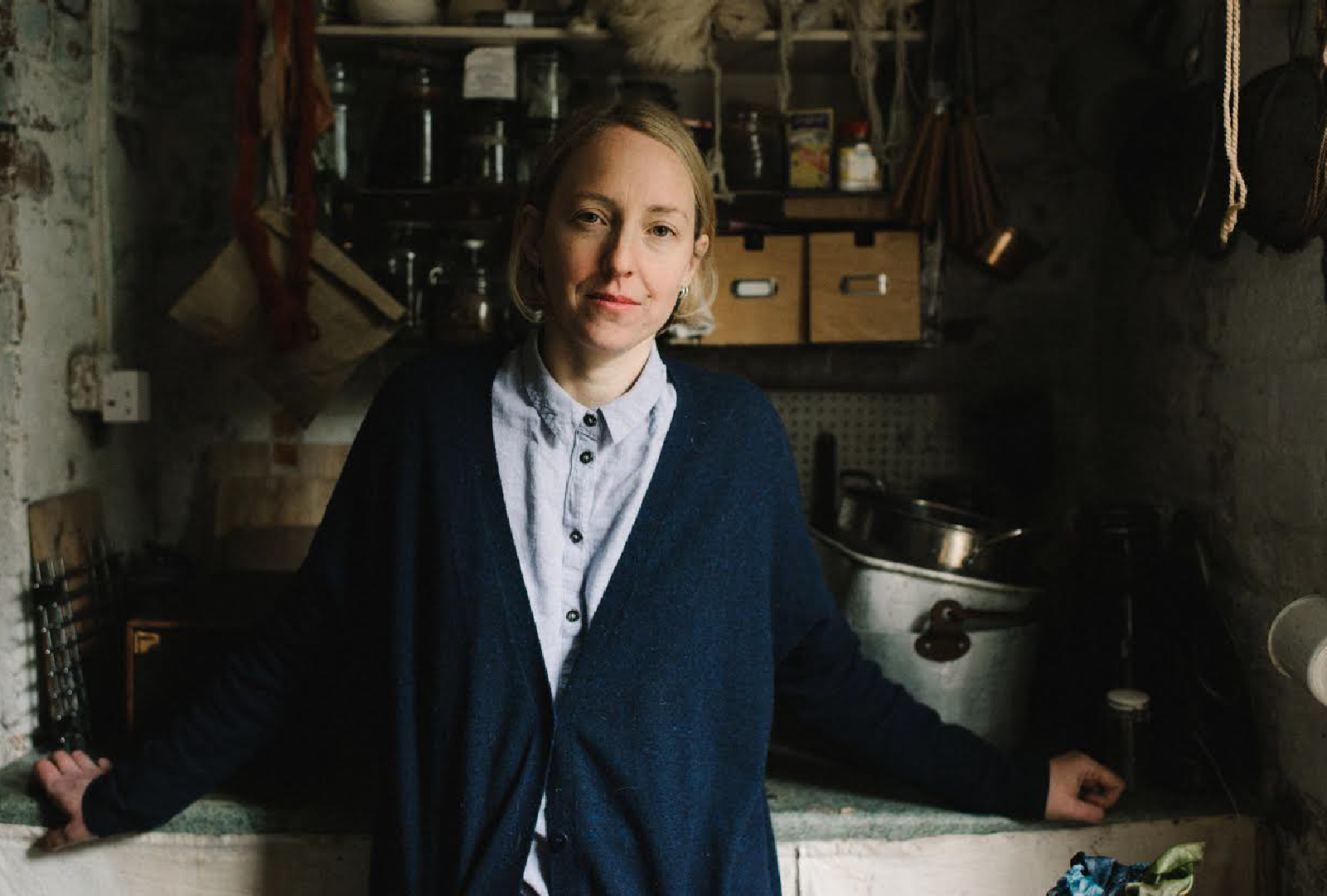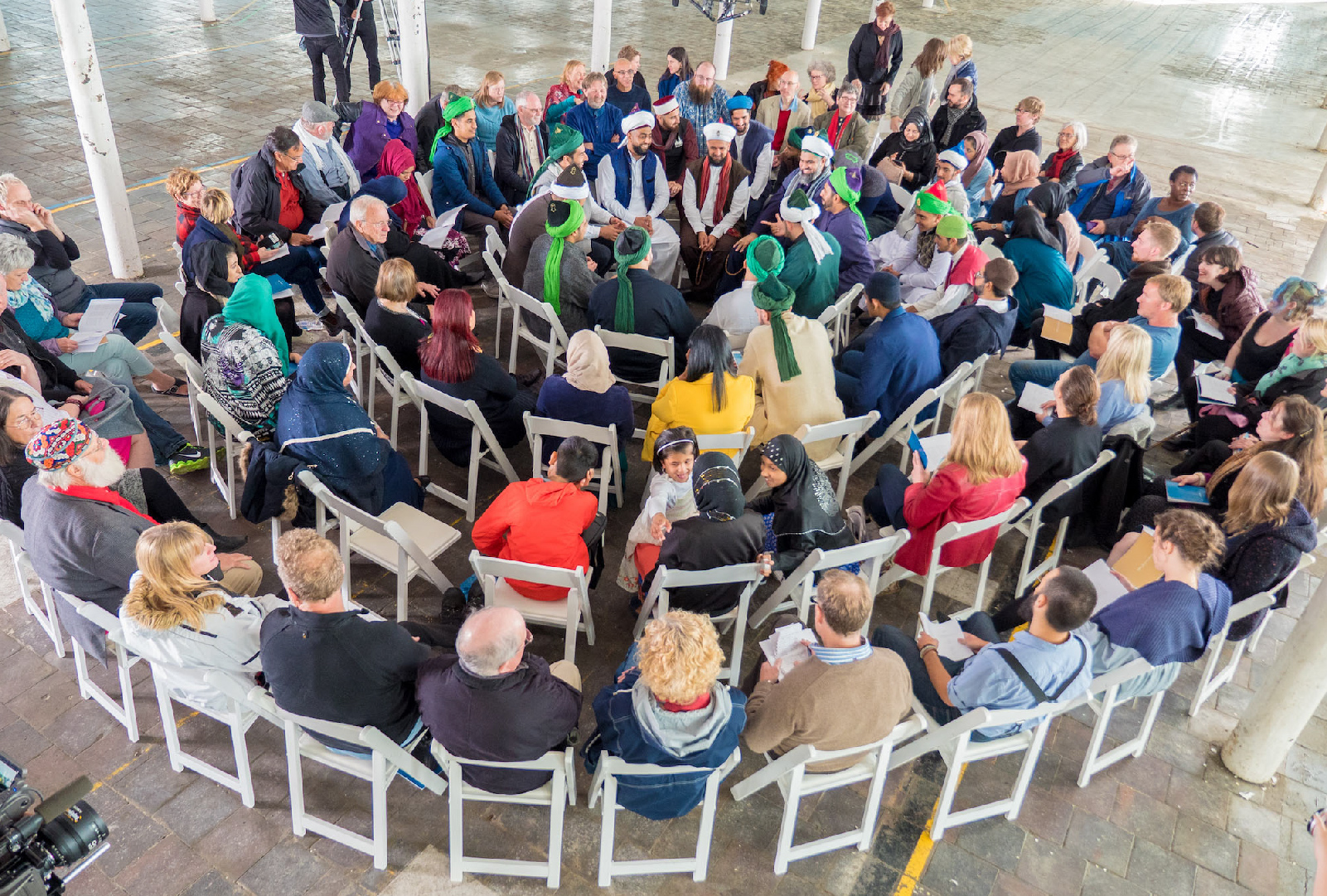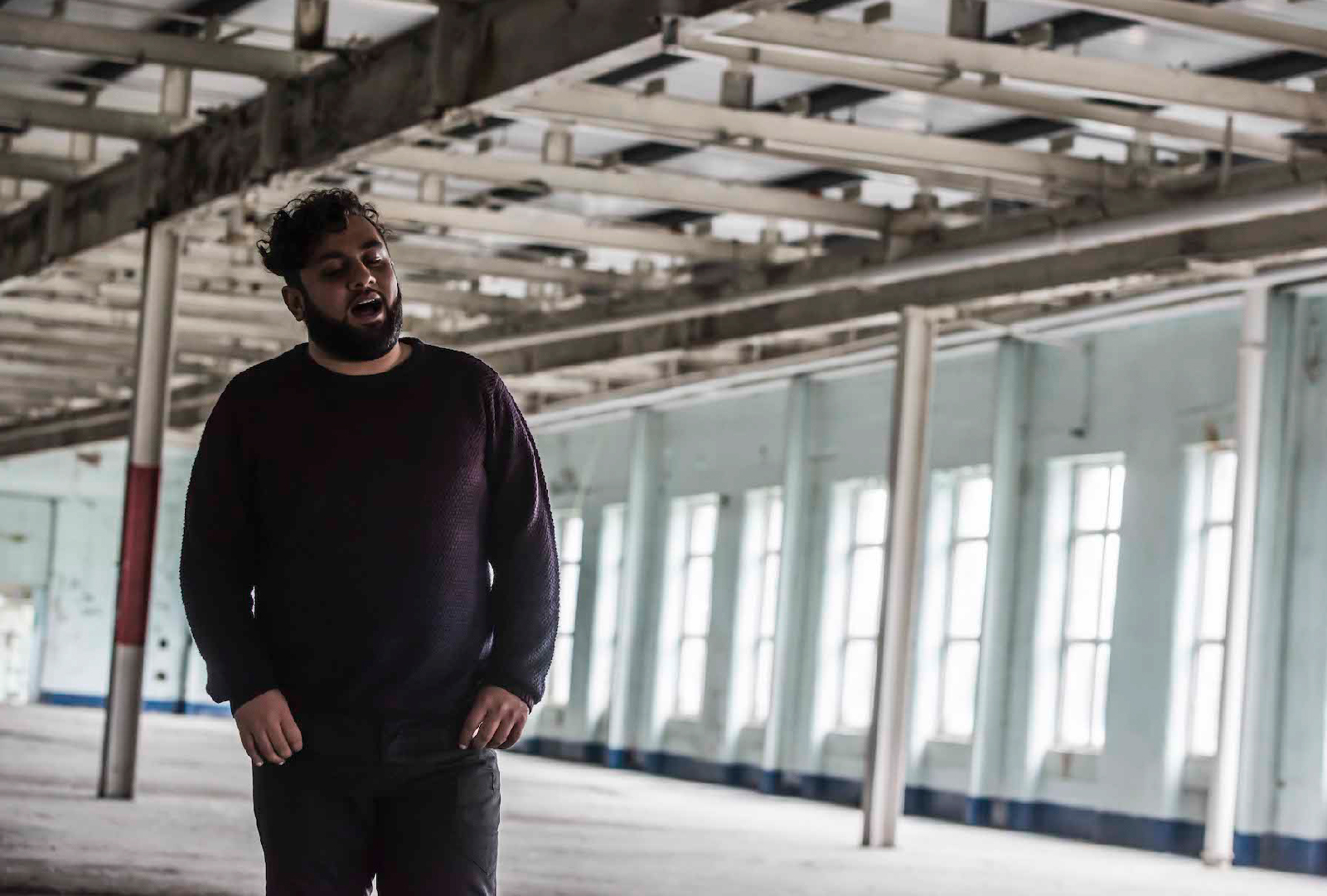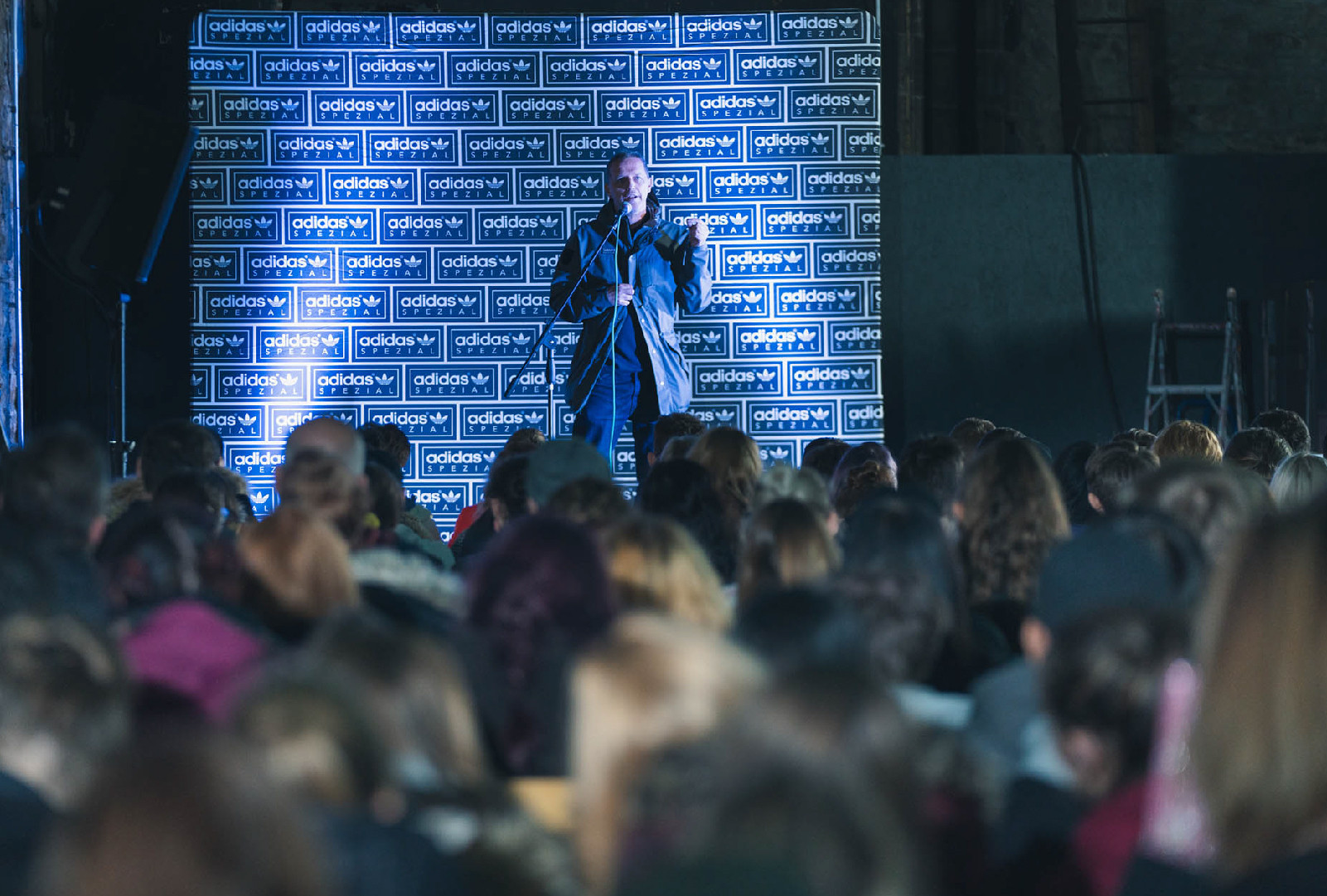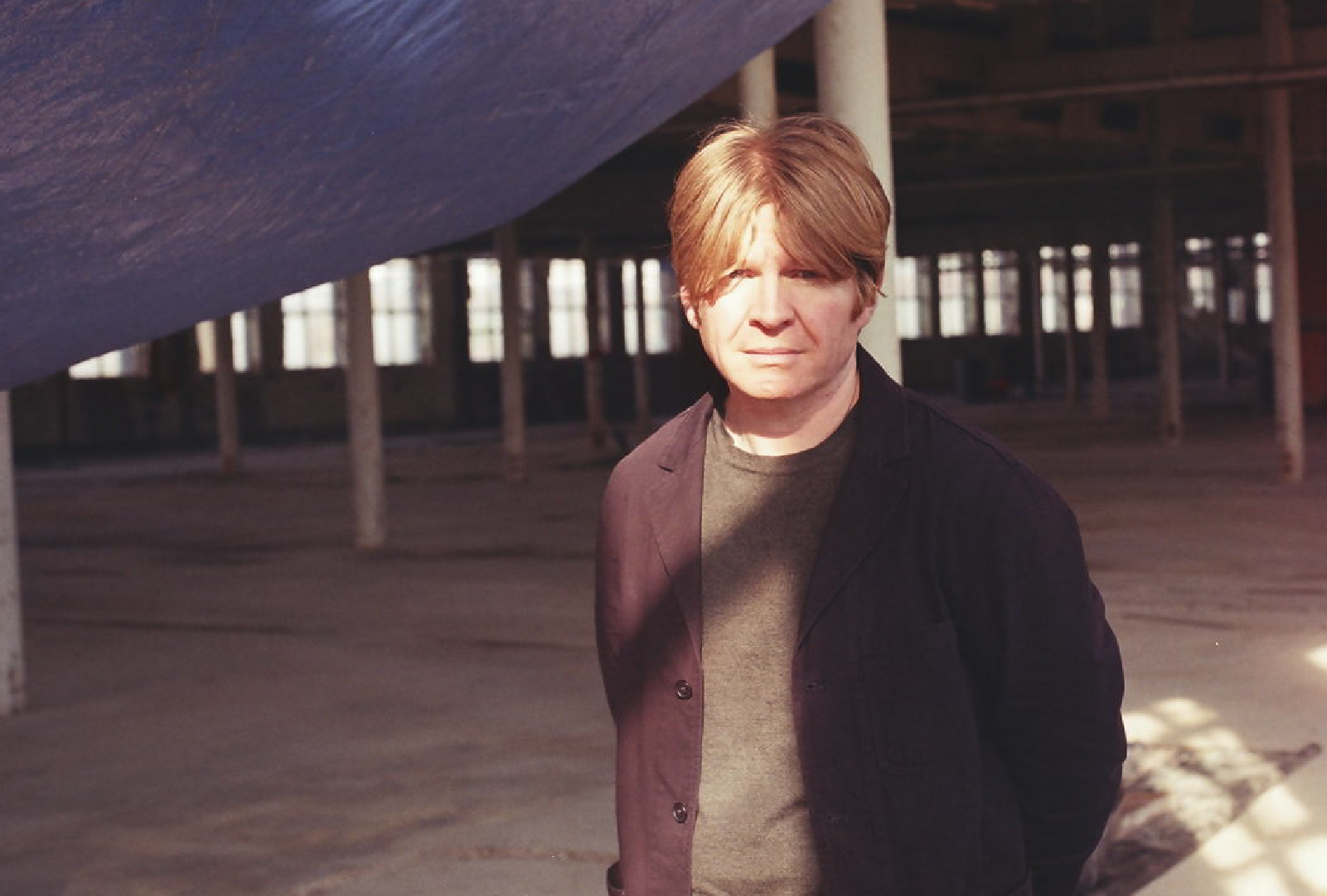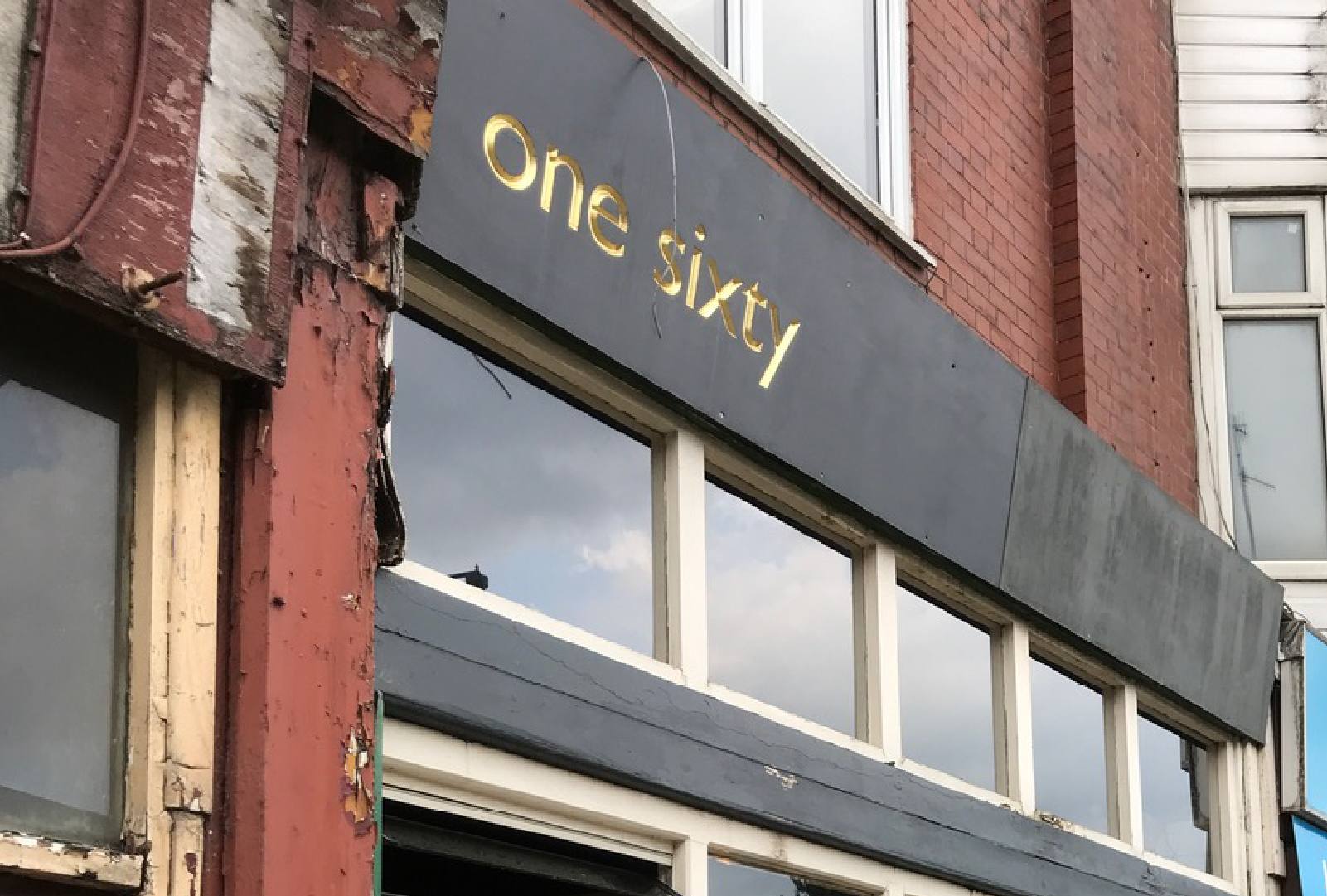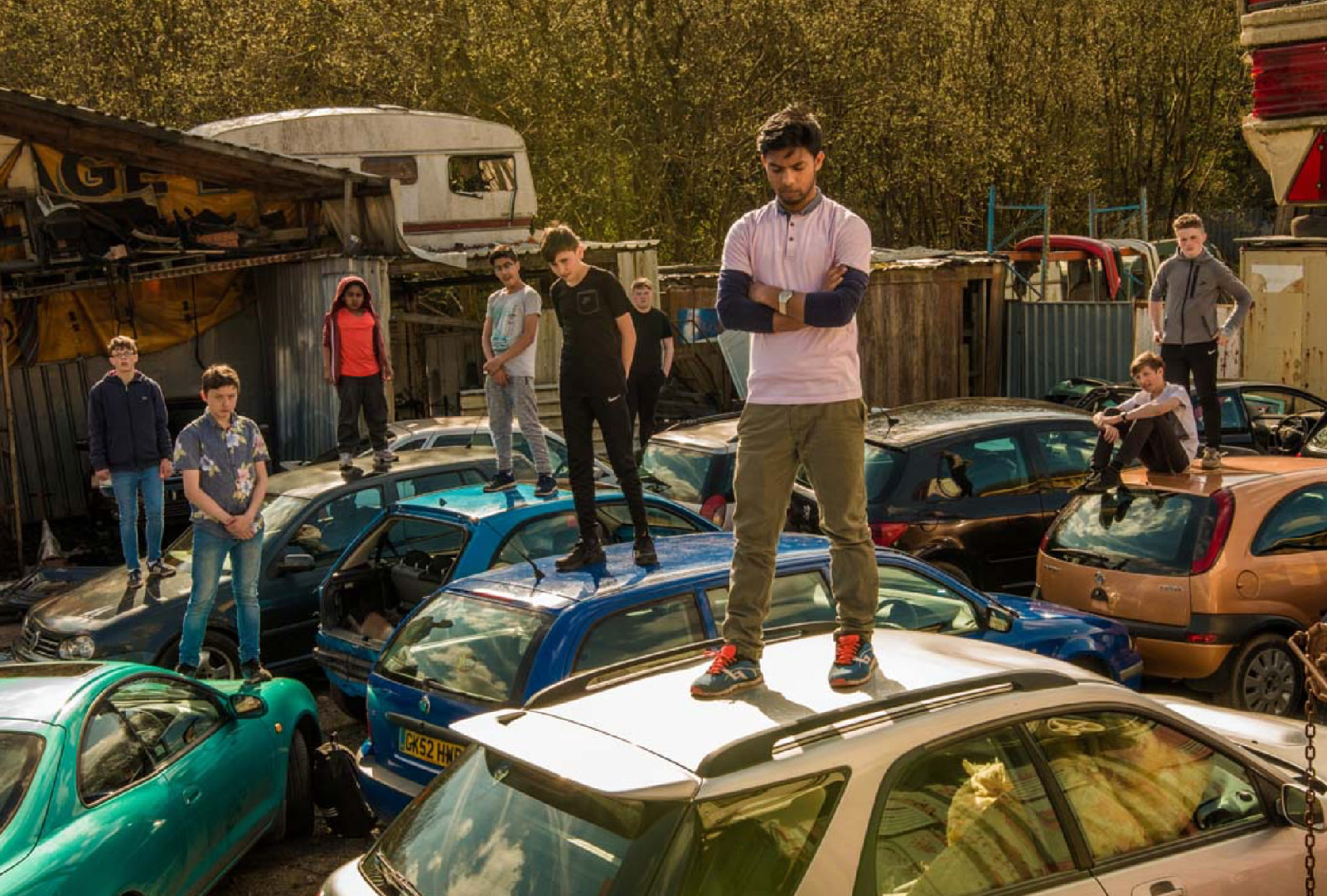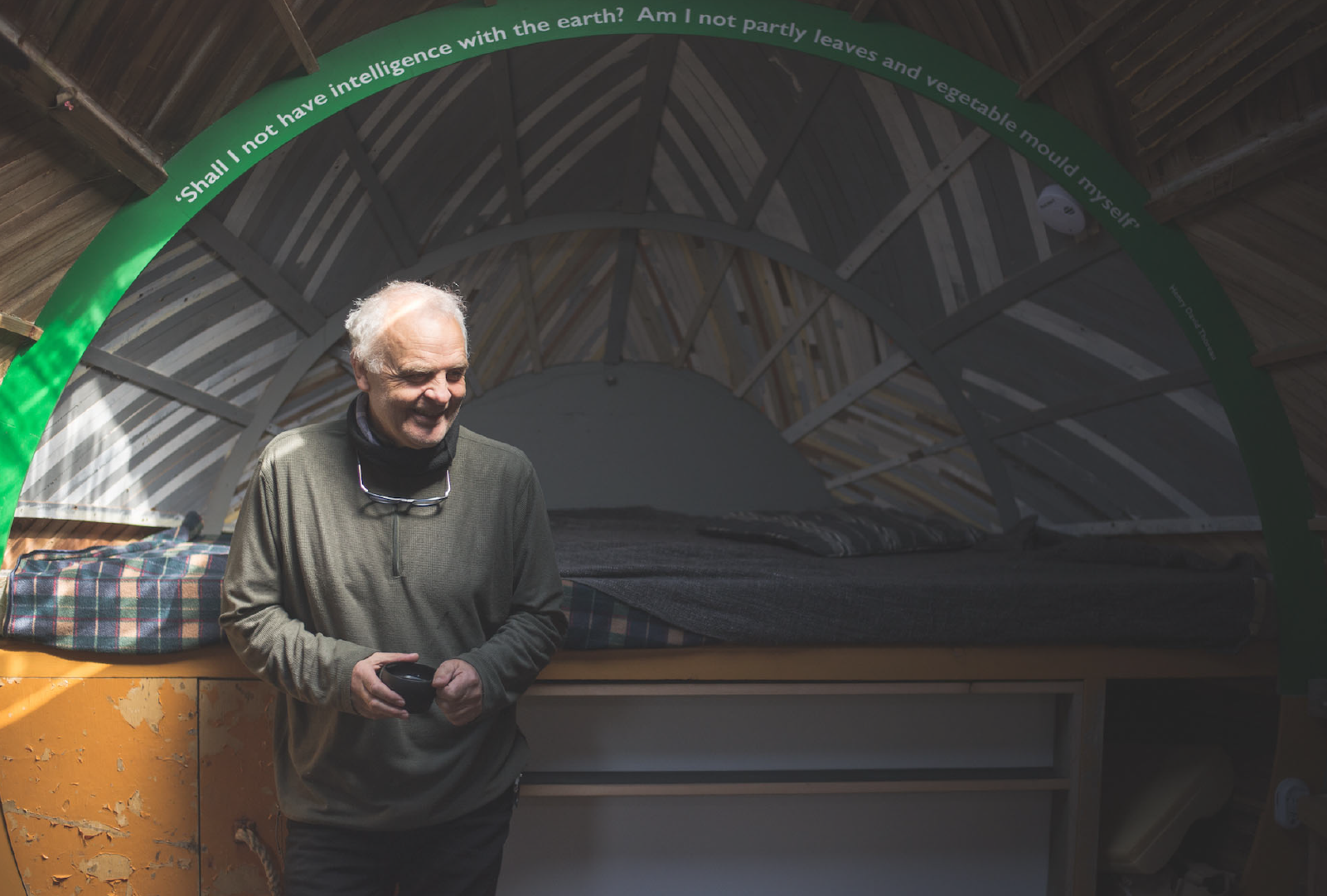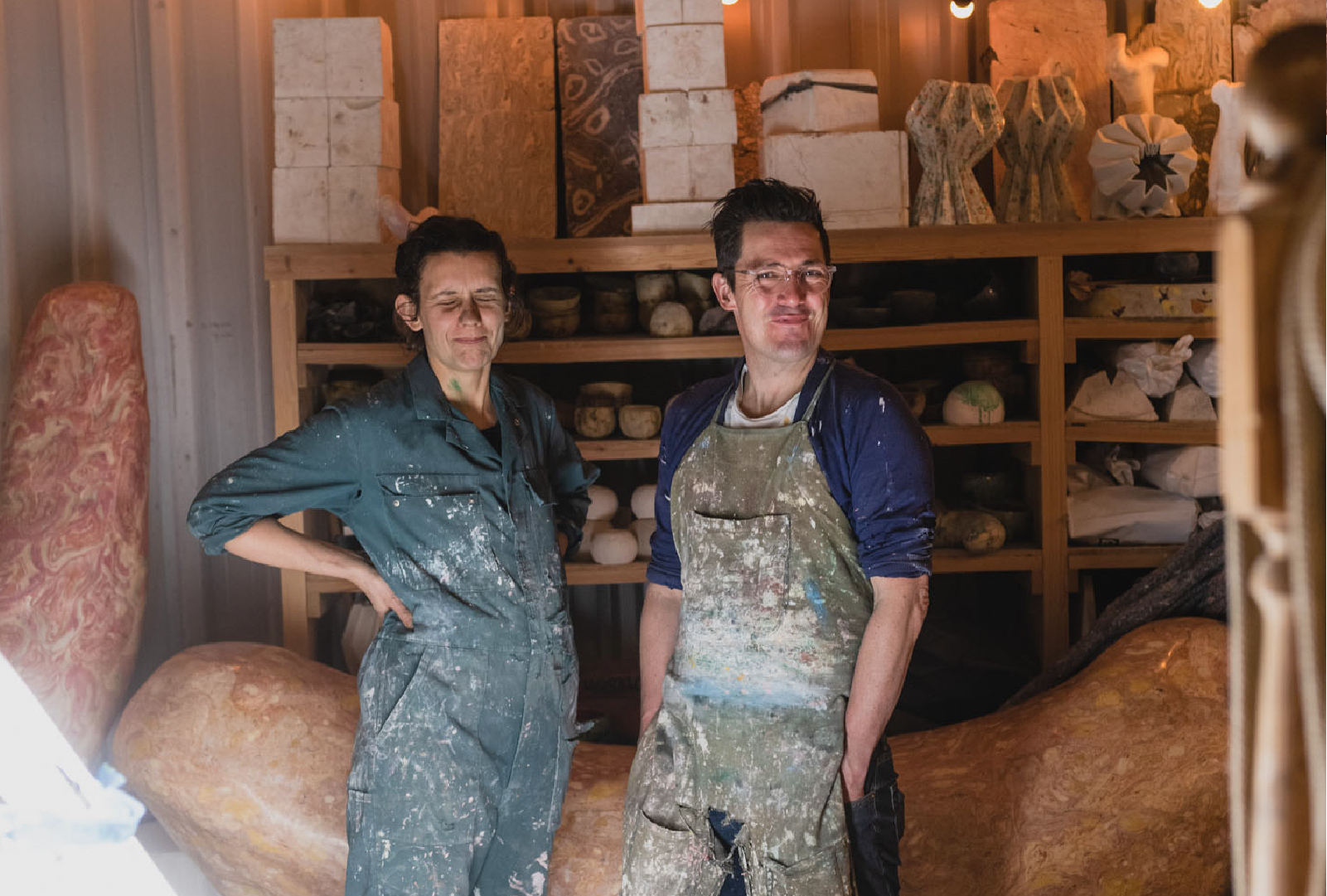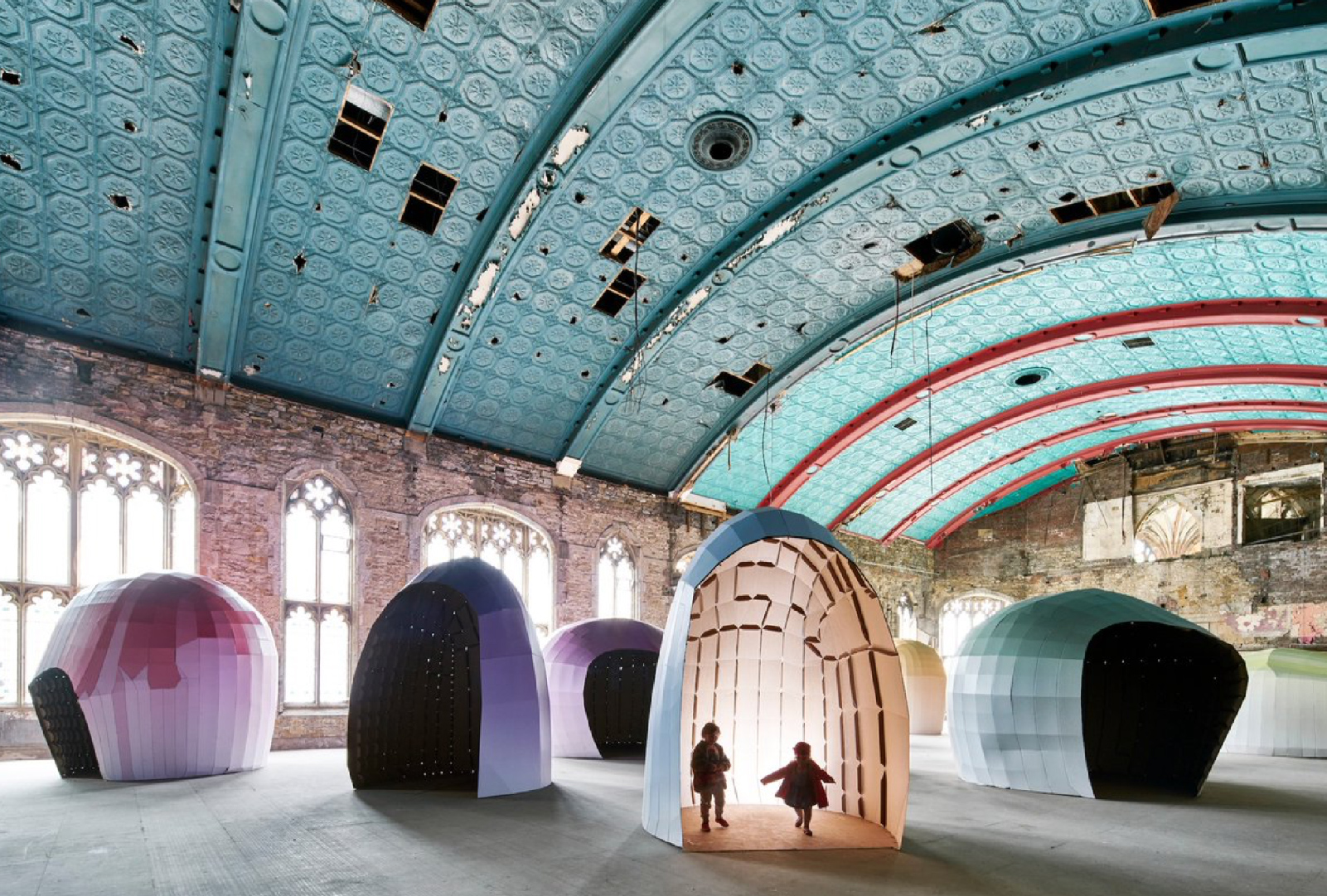A VIEW
From Up THERE
NICK HUNT
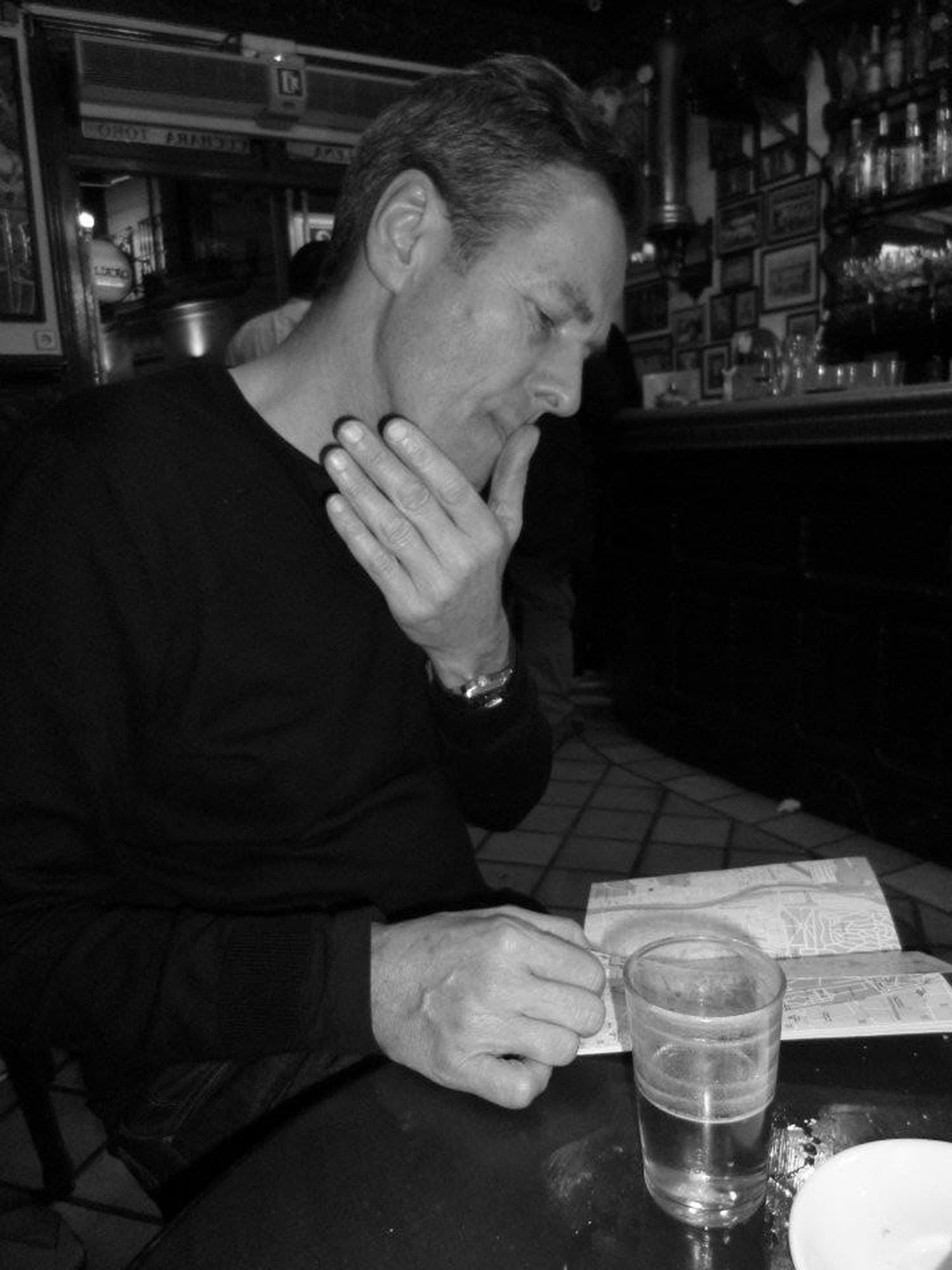
Photographer Melanie Diggle
Nick Hunt is Creative Director of Mid Pennine Arts. He worked for independent arts organisations in Norwich, Cambridge, Colchester, Liverpool, Nottingham and Manchester before coming to Pennine Lancashire. Nick has been involved in Super Slow Way, in its development and then as a regular partner, from the beginning.
Much of your work happens in public spaces, heritage spaces and green spaces. Do you believe those projects and the arts in general have had an impact on the development of the area over the years?
I’ve always felt that, to neutralise our many disadvantages, we should make the most of the brilliant assets that we do have at our disposal. And we are blessed in so many ways.
As an incomer, I maybe notice a bit more some of the special things that a native might take a bit for granted. I have worked here for years but I’m an East Anglian, from the flatlands of the Fens and so I am still consumed with wonder at some quite simple fundamentals of Pennine Lancashire. Contours... Actual, dramatic hills! An elevated viewpoint! Vistas that extend across many miles of landscape... Quarries, with years of workings producing patterning that is a glorious celebration of abstraction. And all those sturdy buildings of every scale built from the massive stones hewn from them. It is no surprise then that our projects so often celebrate some of these sometimes neglected assets.

I’ve always felt that, to neutralise our many disadvantages, we should make the most of the brilliant assets that we do have at our disposal. And we are blessed in so many ways.
Since the millennium I have certainly noticed a major change in the way that our area presents itself to the world. I’m thinking primarily of Burnley that received a terrible press back then, based around lurid news stories of the Burnley riots and endless images of boarded up terraces as all our councils grappled with the overwhelming problems of economic decline and a failing housing market.
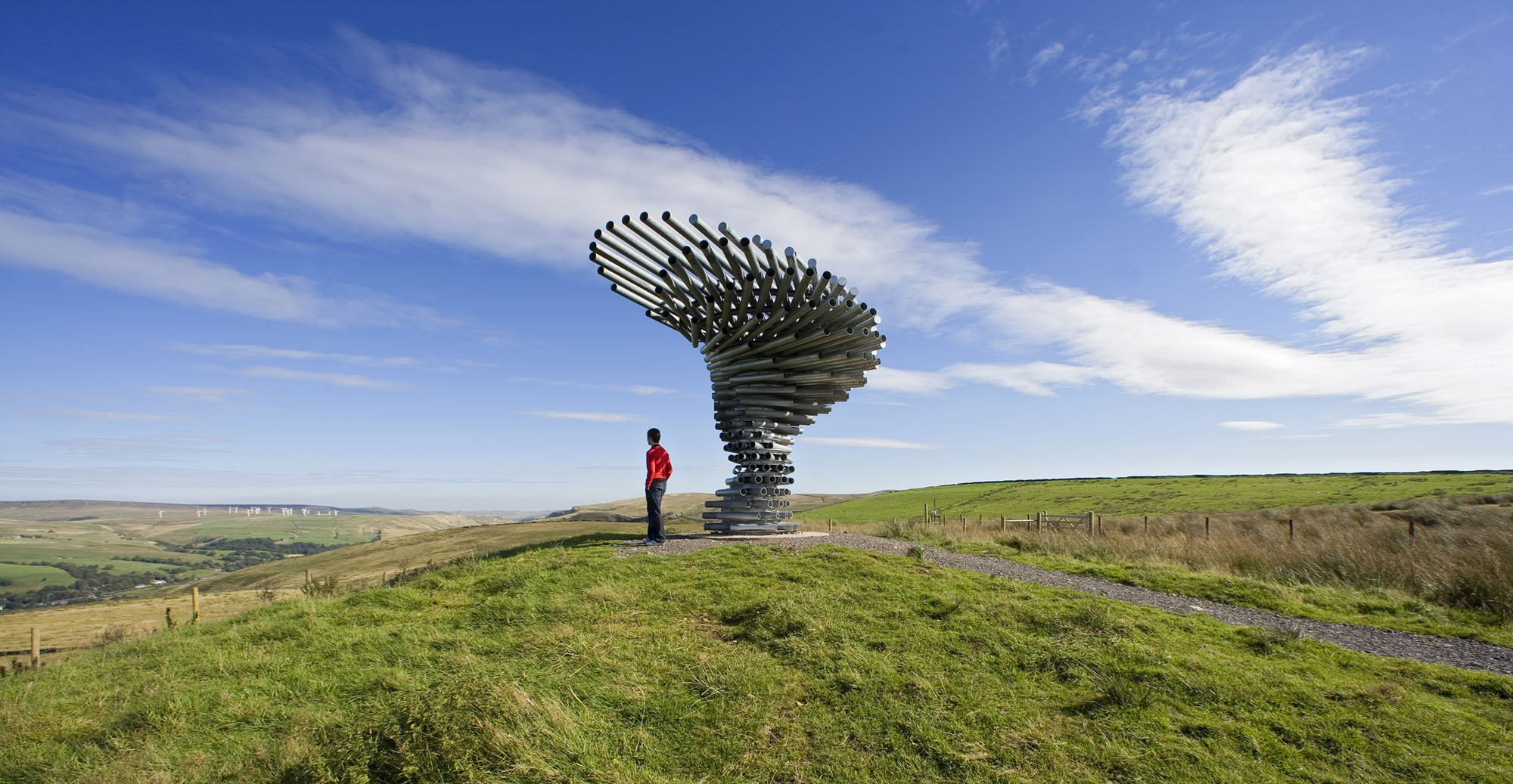
Singing Ringing Tree, designed by Tonkin Liu 2006, commissioned by Mid Pennine Arts
PHOTOGRAPHER Ian Lawson
The response from us and our partners at the time was the Panopticons series of landmarks, conceived in 2002 and completed by 2007, not just to celebrate some very special hilltop places but to create new, positive images of our area to project out into the wider world.
Burnley and Lancashire now have a very different self-image; it may be predicated on aerospace in particular but the way it is codified is often with art. I think of a video from Marketing Lancashire two years ago, built on drone footage of bucolic landscapes, swooping over the hills and touching down at some of our favourite pieces including our most successful project ever, Singing Ringing Tree, a sonic sculpture that whistles hauntingly on the moors above Burnley. Rather like the Angel of the North, I think this Tonkin Liu creation was consummately successful in alchemising a kind of essence of the positive and the uplifting into its very design. For a public body wanting to project ambition and vision, it offers the most potent and handy kind of visual shorthand.

Burnley and Lancashire now have a very different self-image; it may be predicated on aerospace in particular but the way it is codified is often with art.
As we look towards Lancashire 2025, that daringly unlikely proposal for UK City of Culture, from Lancashire as a ‘virtual city’, we will again be seeing the need for art to provide those kinds of visual shorthand, looking beyond the conurbation to take in the quieter, slower elements that do so much to make Lancashire a really special place. Now we need to spotlight and reinterpret the cultural assets that offer those alchemies of art and heritage and our priceless natural environment. Like Pendle Radicals in the Pendle-side villages and Super Slow Way’s vision for the Leeds & Liverpool Canal as a linear park, surely an idea whose time must finally come.
Pendle Radicals is a great programme you've been running for a couple of years now, what's the inspiration behind it and what have been the stand out moments so far?
Pendle Radicals is part of the Pendle Hill Landscape Partnership, a four-year programme celebrating, conserving and promoting our unmistakable local landmark, led by the Forest of Bowland AONB (Area of Outstanding Natural Beauty) with a cluster of partners. It feels like it has always been there for us as an underlying theme, part of our company’s DNA, but we can’t take all the credit for making the project happen... Rather, this narrative thread emerged from discussion groups in the development of the Pendle Hill programme. For many people, Pendle Hill means the Lancashire Witches and not much more but there are many other stories. As well as, for many of us, a distinct fatigue with the crass exploitation of that miserable tale.
The Radicals project has a kind of origin myth, in the story of George Fox climbing Pendle in 1652, and at the summit having the vision that led to the founding of the Quakers. Fox was the first Quaker, now a worldwide movement with 350,000 members. He is our oldest and best known subject but just one of many – a long cast list, through the centuries, of dissenters, change makers and independent spirits who have all, somehow, been drawn to this rugged, inspiring landscape. Notable amongst them, some extraordinary, fearless and indomitable women such as the inspirational working class suffragist Selina Cooper.
Art is the glue in our project and in all the stories of our Radicals but this is also a history project, a research project and a volunteering project. Pendle Radicals has brought us a brilliant team of volunteer researchers and getting to know them and following their enthusiasms wherever they lead us, has been the first great pleasure of our project.

Art is the glue in our project and in all the stories of our Radicals but this is also a history project, a research project and a volunteering project.
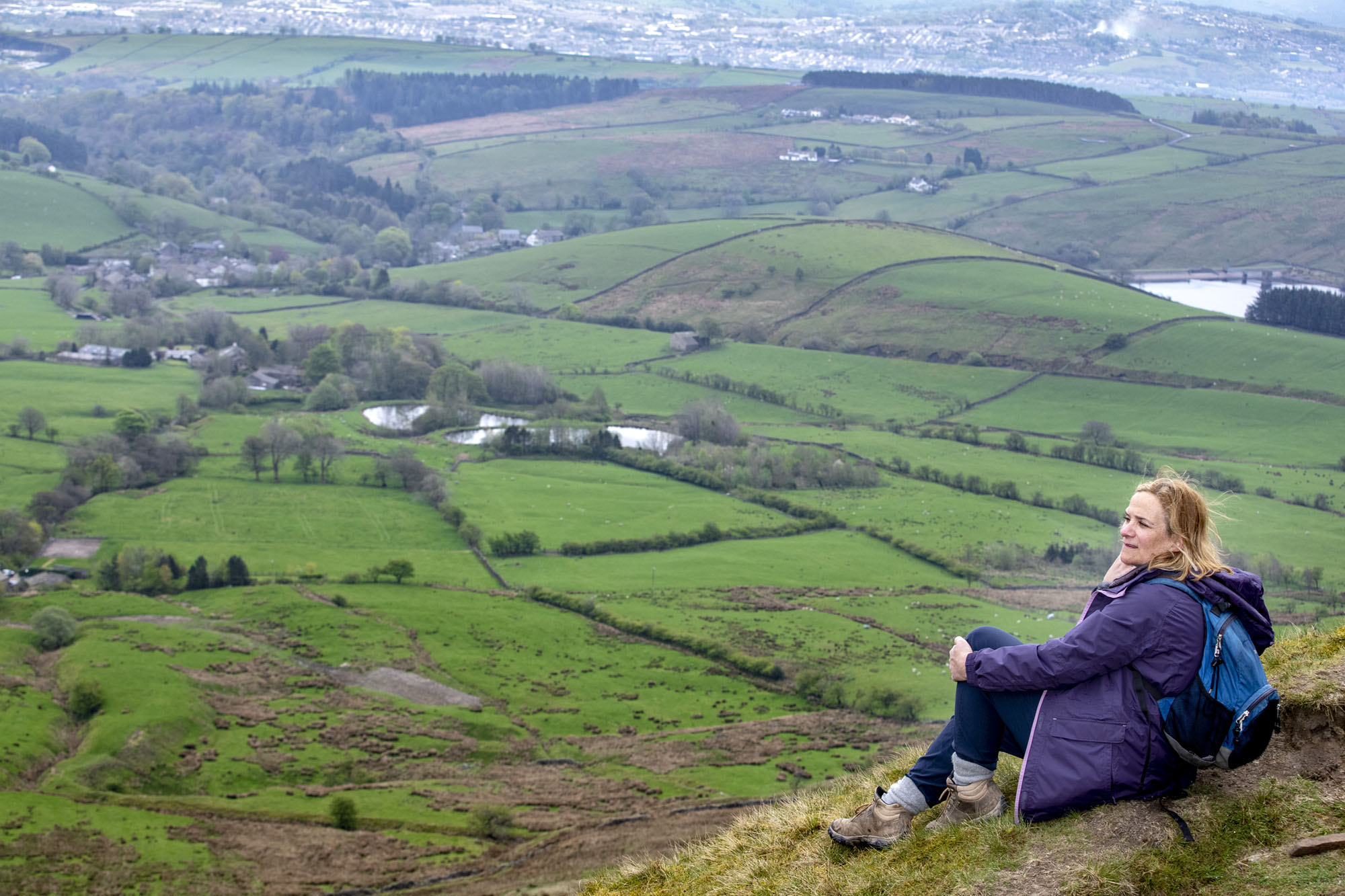
Tracy Chevalier on Pendle Hill 2019
Photographer Stephen Garnett
Another unexpected joy has been to make the acquaintance of some Quakers. I am an atheist and not a bit spiritual but if I were, I would want to be like them. We started the project with the first Quaker but individuals of that persuasion show up repeatedly throughout our investigations. Conscientious objectors in WW1, pacifists and dissenters in all manner of protest movements.
A short film following author Tracy Chevalier’s walk in George Fox’s footsteps by Graham Kay (Fully Formed Films) will appear soon.
Radicals also has a spiritual home in the unique, living monument to the birth and the spirit of socialism that is Clarion House, built for the Independent Labour Party in 1912 and the last of its kind still standing in the country. This timber pavilion in a meadow between Newchurch and Roughlee is just dripping with radical history, with ancient photos of suffragist Selina Cooper and other heroes of the nascent Labour movement and dusty old posters for public meetings with Keir Hardie. And on one wall, the banner that got us started on our greatest Radicals adventure to date: on ancient, almost ecclesiastical cloth, a simple text message – WORKERS OF THE WORLD UNITE.
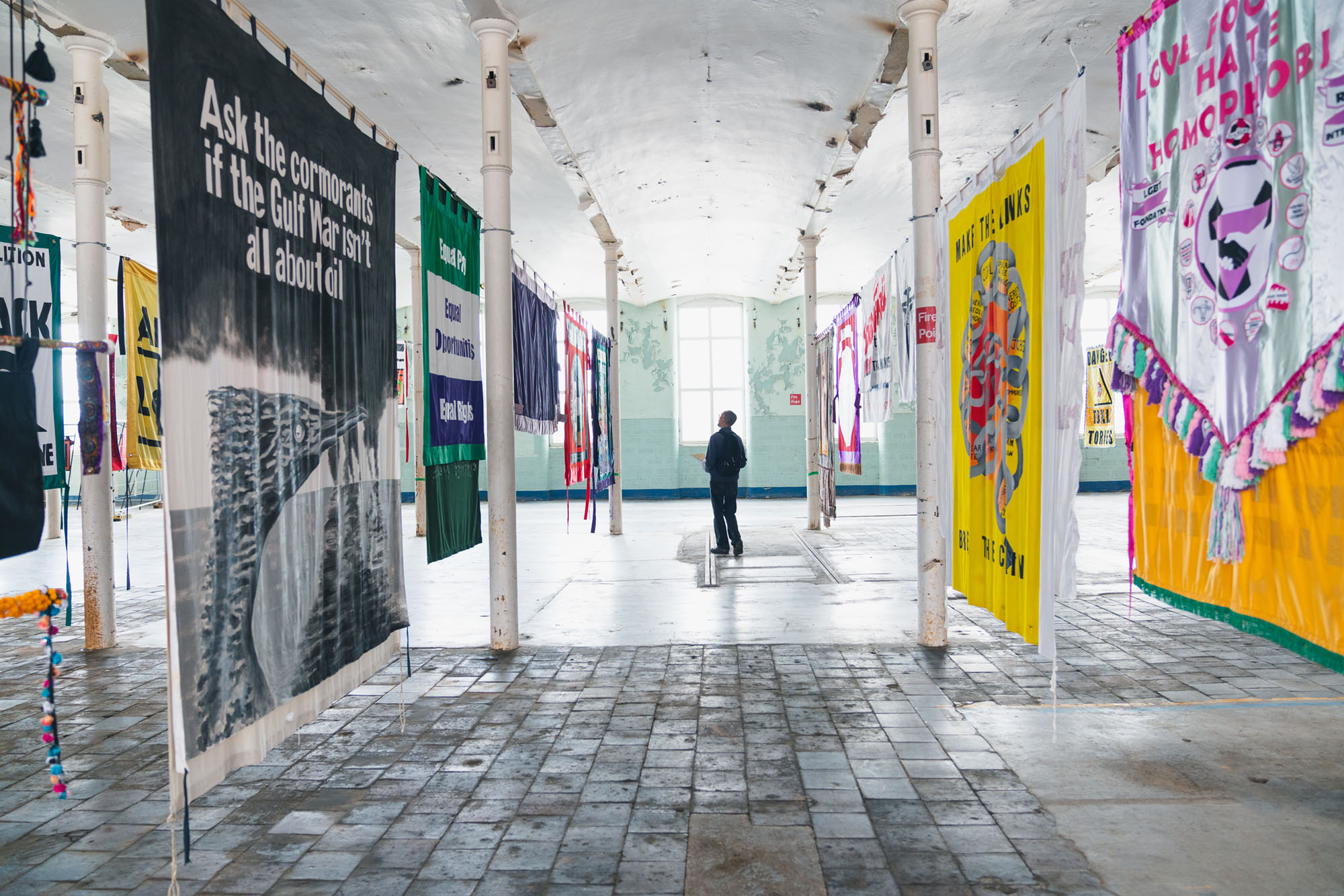
BANNER CULTURE 2019, PENDLE. WITH PARTNERS MID PENNINE ARTS AS PART OF BRITISH TEXTILE BIENNIAL
PHOTOGRAPHER Richard Tymon

The Biennial is a celebration of something quintessentially Pennine Lancashire, its textile heritage, expressed through invigoratingly contemporary work, delivered through repurposing some of our
amazing, historic, industrial locations and mobilising an army of partners right across our sub-region.
MPA was invited to contribute to the first British Textile Biennial in 2019 with an exploration of those Radicals themes on cloth. What emerged was Banner Culture, a kaleidoscopic survey of 100 years of protest, dissent and identity, assembled through a public call out for precious banners loaned from across the UK and beyond, from private individuals and public organisations. The Biennial is a celebration of something quintessentially Pennine Lancashire, its textile heritage, expressed through invigoratingly contemporary work, delivered through repurposing some of our amazing, historic, industrial locations and mobilising an army of partners right across our sub-region. Creative excellence meets critical mass.
Filling the cavernous space of Brierfield Mill with those 220 banners, we were also riffing on the passion, vigour and visual brilliance of some of the mass demos we have witnessed in the last few years – echoes of Brexit, fracking and Trump but, looking back further, over a continuum of dissent, to Greenham Common, CND, women’s suffrage and much more - a mad jumble of campaigns and causes glimpsed across the decades and cumulatively taking the spectacular visual form of a kind of encyclopaedic ghost demo. The installation looked stunning in the cathedral-like space of the mill but it was the profoundly emotional responses of visitors that have stayed with us.
Mid Pennine Arts has been involved in some radical arts programming over the years, very well documented in its 50th anniversary archive. What were some of your favourite finds in there?
The Pendle Radicals timeline starts centuries ago but continues up to the present and we are able to slip into the mix a few of our own cultural heroes of Pennine Lancashire. We’ve been dipping into the archives since MPA’s recent half century, which gave us the perfect excuse to explore our own history. You can now find on our website well over 2,000 digitised artefacts spanning those fifty years.
For me, and many others, the most extraordinary time was the 1970s. And the past really was another country. Nowadays, art is everywhere and any arts organisation has to find its niche and needs to carefully delineate its position on a spectrum from mainstream to fringe and from traditional to contemporary but in 1966 the playing field was wide open. A pioneer organisation like our association saw itself as an all-purpose provider of cultural life and brought actors from the National Theatre and famous poets to the town but also took some really audacious risks. None greater than inviting the nomadic Welfare State International to move to Burnley as MPA ‘theatre fellows’, circling their wagons on the site of the council tip that would one day become Burnley Youth Theatre.
WSI stayed six years, producing an extraordinary sequence of anarchic, subversive, community-based outdoor spectacles and established their enduring place in British and international cultural history here in Burnley, documented so powerfully by the great documentary photographer Daniel Meadows, another artist in residence, in stunning monochrome images.

WSI stayed six years, producing an extraordinary sequence of anarchic, subversive, community-based outdoor spectacles and established their enduring place in British and international cultural history here in Burnley, documented so powerfully by the great documentary photographer Daniel Meadows.
At the end of the 70s, MPA also supported a musicians' collective, a chaotically vibrant cluster of young bands that coincided with the punk moment around Pennine Lancashire. And for one oral history recording for our 50th, we brought back together a couple of those young punks, Boff Whalley, later of Chumbawamba, and Stephen ‘Sage’ Hartley of NotSensibles, who reminisced about the DIY creativity of those times and how that radical spirit had carried through for so many individuals into lives of non-conformism and self-sufficiency. The seed planted with that conversation has grown into a creative collaboration. Sage and Boff, along with photographer Casey Orr, are contributors this year to our latest adventure for Pendle Radicals, Sick of Being Normal, a celebration of that punk moment, currently paused by the lockdown but continuing soon.
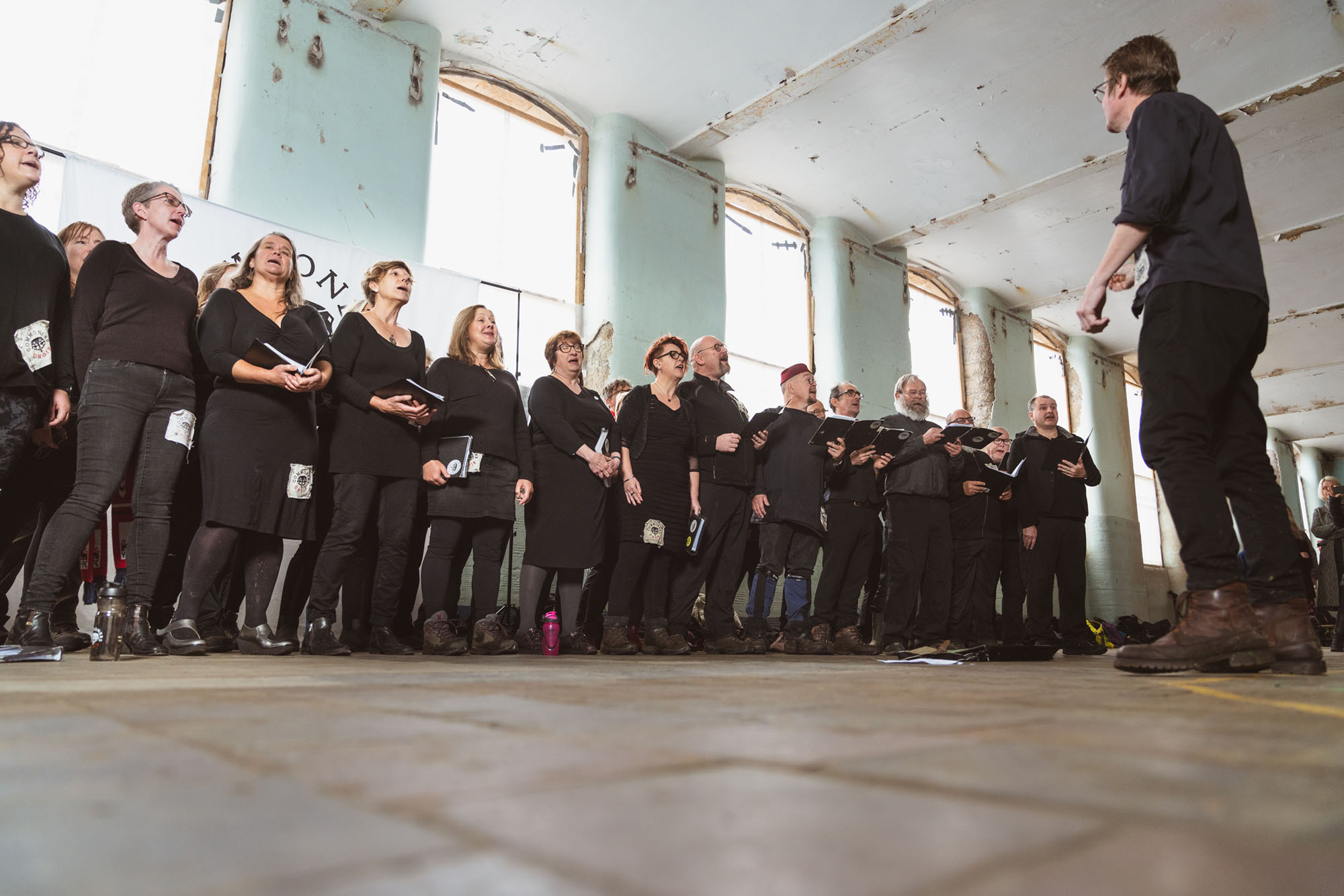
COMMONERS CHOIR AT BANNER CULTURE 2019, PENDLE. WITH PARTNERS MID PENNINE ARTS AS PART OF BRITISH TEXTILE BIENNIAL
PHOTOGRAPHER Richard Tymon
When we wanted to celebrate the opening of Banner Culture, we turned once again to Boff Whalley, inviting him to bring over his current project, Commoners Choir, from Leeds, and they were perfect for the task. Boff is a consummate writer of angry, eloquent, sometimes deliciously subversive songs, and this potent, fifty-strong choir bring them beautifully, stirringly to life. Find them on YouTube with a string of perfectly judged videos, some laugh out loud, some poignant, each one an exercise in hitting the nail on the head.
Of all those images of Welfare State in the 70s, the ones that resonate with me most are of Parliament in Flames. A community show on Fulledge Recreation Ground in Burnley and later in other UK locations, it featured a huge puppet giant and a vast plywood backdrop of the Palace of Westminster, which at the climax of the evening would be gleefully torched to mass celebration.
So where is our Parliament in Flames now? Welfare State shows were much more than satire, involving process as well as product and binding ritual, community and rites of passage into the experience of the spectacle. And in search of that kind of feeling today, my mind comes back to Banner Culture - for myriad glimpses of a profoundly democratic form of creativity and ghostly echoes of enormous public events where the whole is so much more than the sum of the parts... those spontaneous, multitudinous events on our city streets, demonstrating the communal spirit, the explosion of imagination and wit and the visual power of the spectacle. And now, Black Lives Matter is at last taking the headlines. Part of a very long game, of course, and I recall Banner Culture artefacts from campaigns for Mandela, for Stephen Lawrence, and many others... but maybe also a pivotal moment. Certainly, the impromptu sliding of a slave trader’s effigy into a city dock was a startling coup de theatre that Welfare State would recognise.
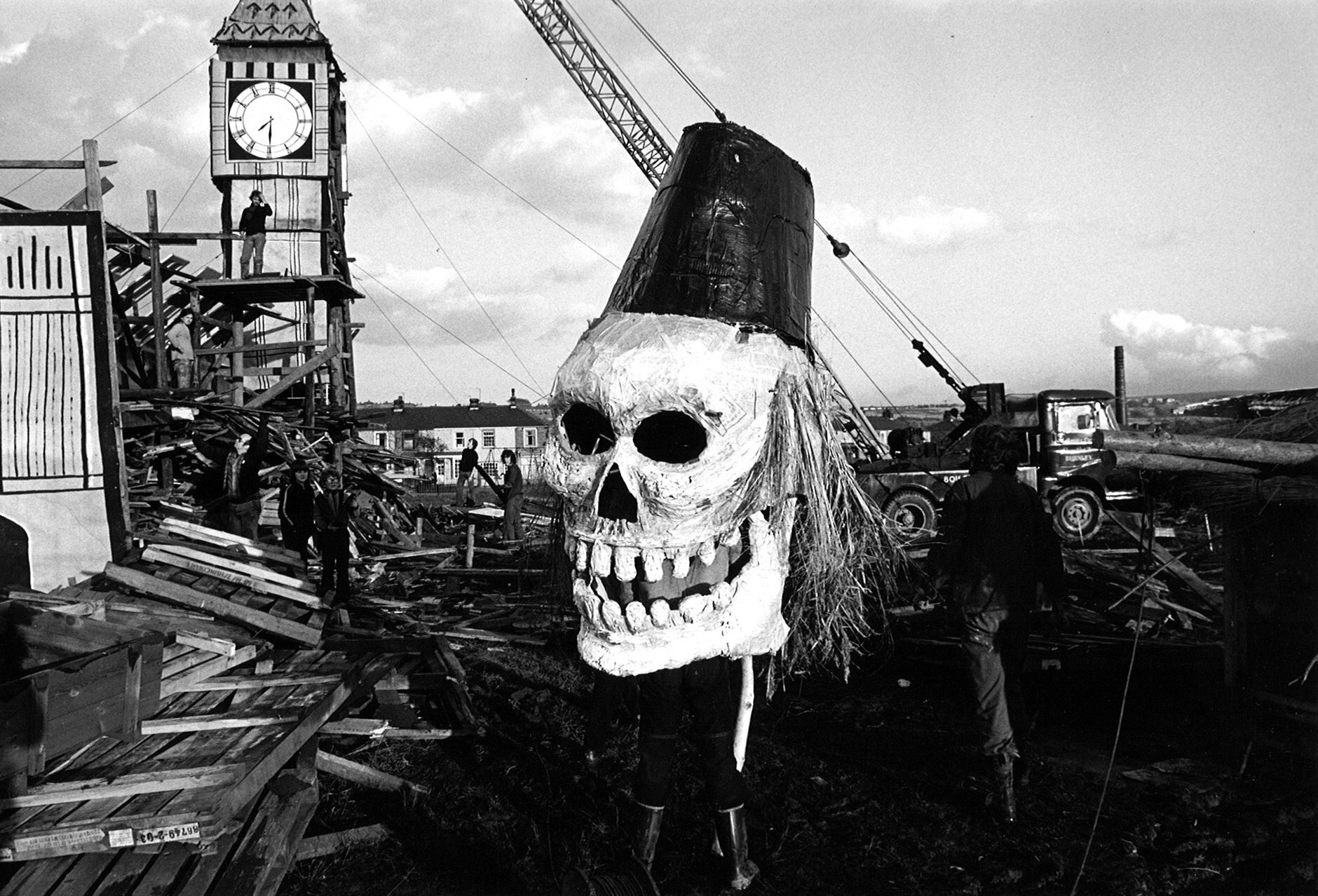
Parliament in Flames by Welfare State International 1975, Burnley
Photographer Daniel Meadows
Articles

